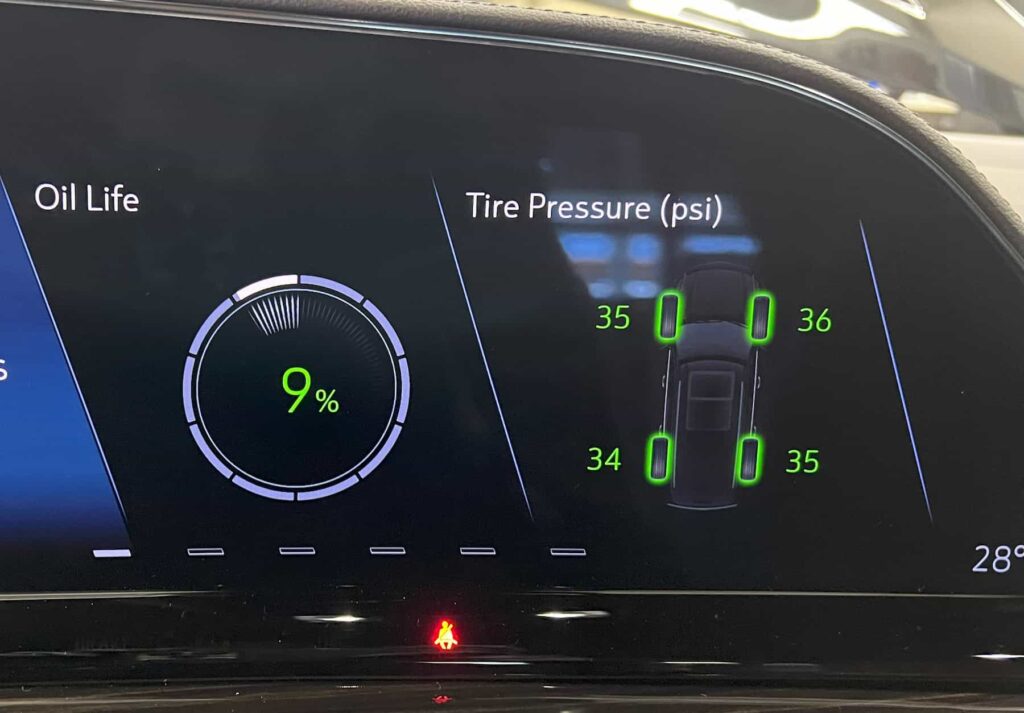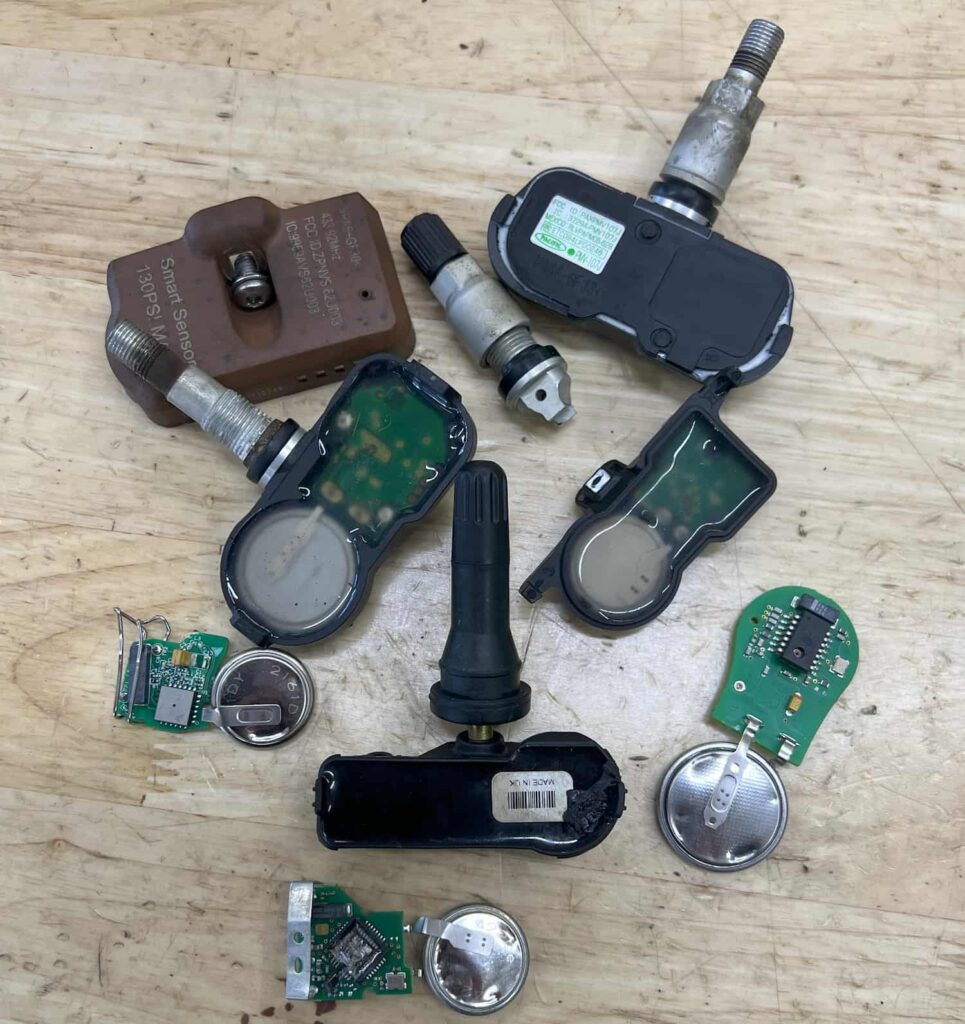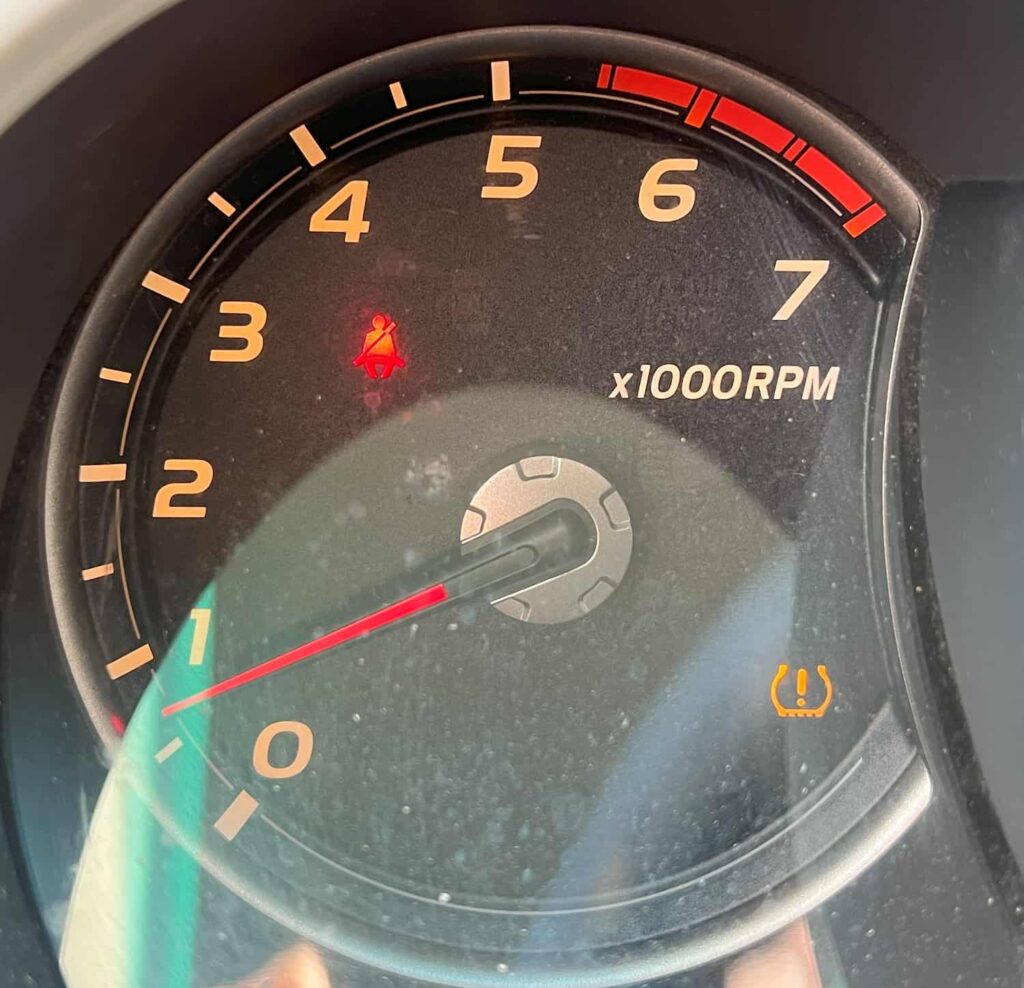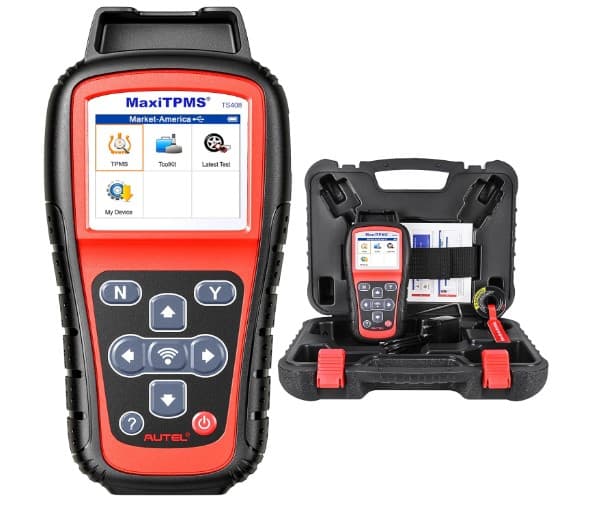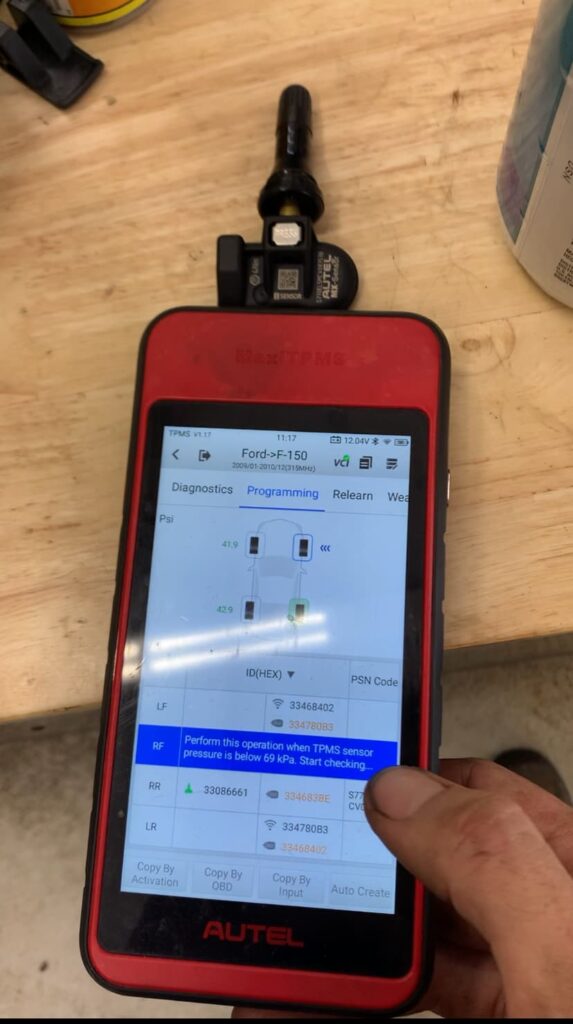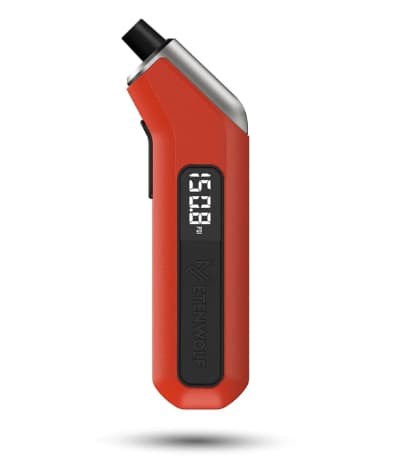In today’s automotive world, safety features have become paramount, with the Tire Pressure Monitoring System (TPMS) standing out as a critical component in maintaining vehicle safety and efficiency. TPMS is designed to alert drivers to a significant difference in tire pressure, which could lead to decreased grip, increased tire wear, and even tire failure.
At the heart of this system are the TPMS sensors, which continuously monitor the pressure in each tire and report back to the driver’s dashboard, ensuring that any potential issues are promptly addressed.
Understanding the functionality of TPMS sensors is crucial for every driver. These sensors play a pivotal role in detecting and reporting any discrepancies in tire pressure. A direct TPMS sensor measures the pressure in each tire and sends this information to the vehicle’s computer system, triggering a low air pressure alert if the pressure falls below a predetermined threshold.
However, like any technological component, TPMS sensors are not immune to failure. Recognizing the symptoms of a bad TPMS sensor is essential for maintaining the reliability and safety of the monitoring system. Ignoring these symptoms can lead to a false sense of security, as undetected low tire pressure might significantly impact the vehicle’s handling, fuel efficiency, and the overall safety of the occupants.
Understanding TPMS Sensors
What is a TPMS Sensor?
A TPMS (Tire Pressure Monitoring System) sensor is a critical component within a vehicle’s safety mechanism designed to monitor the air pressure inside the pneumatic tires on various types of vehicles. These sensors are either installed in the tire assembly or integrated into the valve stem, and they play a crucial role in alerting drivers about significant under-inflation or over-inflation of tires in real time. By doing so, TPMS sensors contribute significantly to a vehicle’s overall safety, tire lifespan, fuel efficiency, and performance.
How Do TPMS Sensors Work?
TPMS sensors work by directly monitoring the pressure levels within each tire and sending this data to the vehicle’s onboard computer system.
Tire pressure sensors measure the pressure in each tire directly. They are battery-powered devices mounted on the wheel rim inside the tire. Tire sensors provide accurate pressure readings and can alert the driver to which specific tire is under-inflated. This system uses radio frequency technology to transmit data to the vehicle’s onboard computer system, which then alerts the driver through the dashboard display.
Bad Tire Sensor Symptoms
The reliability of the Tire Pressure Monitoring System (TPMS) hinges on the proper functioning of the TPMS sensors. These sensors are pivotal in providing accurate and timely data about the tire pressure to the driver. However, like any other electronic device, TPMS sensors can fail due to various reasons, including dead batteries, damage, or wear and tear over time. Recognizing the symptoms of a bad tire pressure sensor is crucial for maintaining vehicle safety and performance. Here are some common signs that may indicate a TPMS sensor is failing:
Inaccurate Tire Pressure Readings
One of the most straightforward symptoms of a malfunctioning TPMS sensor is inaccurate tire pressure readings. If your vehicle’s dashboard displays a tire pressure that significantly deviates from the actual air pressure (confirmed with a manual gauge), a faulty sensor might be the culprit.
Tire Pressure Monitoring System Warning Light Stays on or Blinks
A TPMS warning light that stays illuminated or blinks after startup is a telltale sign of issues within the system. While a steady or solid TPMS warning light could indicate low tire pressure, a flashing TPMS light often signals a malfunction in the TPMS system, potentially pointing to a tire pressure sensor problem.
Frequent Tire Pressure Alerts
If you receive frequent tire pressure alerts despite the tires being properly inflated, this could indicate a sensor failing to accurately read the tire air pressure or a communication issue between the sensor and the vehicle’s onboard computer system.
Inability to Reset the TPMS Indicator
Difficulty or inability to reset the TPMS indicator after adjusting tire pressure to the recommended levels may also signal a sensor issue. This could stem from a sensor’s failure to communicate the updated air pressure to the vehicle’s computer.
Unusual Fluctuations in Tire Pressure Readings
Experiencing erratic or unusual fluctuations in tire pressure readings that do not align with actual changes in tire pressure can be a symptom of tire pressure sensor failure. This inconsistency could lead to unnecessary alerts or failure to receive a warning when needed.
Recognizing and addressing these symptoms promptly can prevent further issues, ensuring the TPMS functions as intended to maintain safety and efficiency. Regular checks and maintenance can help identify sensor issues early, allowing for timely replacements or repairs.
Diagnosing Bad TPMS Sensor Issues
Identifying the root cause of TPMS sensor failures is crucial for ensuring that the correct measures are taken to resolve the issue. Diagnosing a bad TPMS sensor involves a few steps that vehicle owners can take to confirm the malfunction before seeking professional assistance or attempting a repair. Here are some key diagnostic procedures:
Professional Diagnostic Tools
The most reliable method for diagnosing a faulty TPMS sensor is through the use of professional diagnostic tools available at auto repair shops. These tools can communicate with the vehicle’s onboard computer system to retrieve fault codes and identify which sensor, if any, is failing. Automotive professionals can also conduct a thorough inspection of the tire pressure sensors to check for physical damage, battery life, or other issues that might be causing the malfunction.
DIY Troubleshooting Tips
For car owners interested in conducting preliminary checks themselves, there are several approaches to diagnosing TPMS sensor issues:
Manual Tire Pressure Check: Compare the tires pressure reading displayed on your vehicle’s dashboard to the actual air pressure in each tire using a digital tire pressure gauge. Discrepancies between these readings can indicate a sensor issue.
Visual Inspection: Inspect the tire pressure sensors (if accessible) for any visible signs of damage or corrosion. Damage to the sensor’s housing or valve stem can interfere with its ability to function correctly.
Battery Check: While it’s challenging for vehicle owners to check the battery life of a TPMS sensor with a TPMS diagnostic tool, understanding that most sensors have a battery life of 5 to 10 years or 100,000 miles can help gauge whether a replacement might be due.
Resetting the TPMS System: Some vehicles allow for a TPMS system reset via a reset button, using the information display, or just driving the car for a certain distance at a specific speed. Completing this process more than once can sometimes resolve communication issues between the sensors and the on board computer.
When to Seek Professional Help
If preliminary diagnostics suggest a sensor issue, but the exact cause remains unclear, it’s advisable to seek professional assistance. Automotive technicians have the tools and expertise to diagnose and resolve TPMS sensor issues accurately, ensuring that the system functions correctly and continues to provide reliable tire pressure information.
Solutions and Preventative Measures for Bad TPMS Sensor Symptoms
Once a TPMS sensor issue has been diagnosed, taking the appropriate steps to resolve the problem is essential for maintaining the vehicle’s safety and efficiency. Here are effective solutions and preventative measures:
Replacing a Faulty TPMS Sensor
The most straightforward solution to a bad TPMS sensor is to replace it. Sensor replacement should be carried out by a professional mechanic or tire technician to ensure proper installation and calibration. It’s crucial to choose a quality replacement sensor that is compatible with your car make and model to ensure a seamless communication signal with the vehicle’s onboard computer system.
Regular Maintenance and Checks
Regular maintenance of the TPMS, including routine checks and inspections, can prevent sensor failures. This includes:
Tire Pressure Checks: Regularly checking tire pressure manually with a gauge can help identify discrepancies with TPMS readings early on.
Sensor Inspections: Having a professional inspect the TPMS sensors for damage or battery life during routine vehicle maintenance can catch issues before they lead to sensor failure.
System Calibration: Ensuring the TPMS system is correctly calibrated after tire rotation, replacement, or sensor changes can prevent false readings and alerts
Importance of Using Quality Sensors and Professional Installation
Using high-quality TPMS sensors and relying on professional installation are critical factors in preventing premature sensor failure. Quality sensors are more likely to have a longer lifespan, better accuracy, and compatibility with your vehicle’s system. We recommend only replacing tire pressure sensors with OEM or Autel products. Professional installation ensures that the sensor is correctly mounted and programmed, reducing the risk of damage or malfunction.
Tips for Extending TPMS Sensor Life
To extend the life of your TPMS sensors and avoid common issues, consider the following tips:
Avoid Harsh Chemicals: When cleaning your wheels, avoid using harsh chemicals that could corrode the TPMS sensors. During winter months, rinse salt or other road chemicals off.
Tire Sealants: Use caution when applying tire sealants, as some products can damage the sensors.
Battery Awareness: Be aware that TPMS sensor batteries have a finite lifespan, typically 5 to 10 years. Planning for eventual replacement can prevent unexpected failures.
By implementing these solutions and preventative measures, vehicle owners can ensure that their TPMS sensors function effectively, maintaining the safety and performance of their vehicle. Addressing bad TPMS sensor symptoms promptly and properly can save time, money, and potentially prevent accidents caused by tire-related issues.
Frequently Asked Questions About TPMS Sensors
Can driving conditions affect TPMS sensor performance?
Yes, driving conditions can significantly impact TPMS sensor performance. Extreme temperatures, rough roads, and exposure to water and road salts can lead to sensor damage or reduced battery life.
What causes TPMS sensors to fail?
TPMS sensors can fail due to a variety of reasons, including battery depletion, physical damage, corrosion, or exposure to harsh chemicals. The most common cause of failure is battery depletion, as the sensors are powered by non-replaceable and non-rechargeable batteries designed to last for a certain number of years or miles.
How often should TPMS sensors be replaced?
TPMS sensors should be replaced every 5 to 10 years, depending on the vehicle’s make and model, sensor quality, and driving conditions.
Can I replace just one TPMS sensor, or do all need to be replaced at the same time?
Yes you can replace just one faulty TPMS sensor. It’s often recommended to evaluate all sensors’ condition and battery life. If the sensors were installed at the same time and one has failed, the others may soon follow. However, replacing all sensors at once is not a requirement unless they are all showing signs of failure.
Are there universal TPMS sensors?
Yes, there are universal TPMS sensors available that are designed to be compatible with a wide range of vehicle makes and models. These sensors require programming to function correctly with the vehicle’s onboard computer system.
How much does it cost to replace a TPMS sensor?
The cost to replace a tire pressure sensor can vary widely depending on the vehicle make and model, the type of sensor required, and labor costs. On average, the cost can range from $50 to $250 per sensor, including parts and labor.
ABOUT THE AUTHOR
STEFAN A.
Professional Automotive Technician – I am currently an automotive technician in New Jersey and have worked in private shops as well as dealerships. When I am not writing articles I am wrenching on race cars and driving radio controlled cars at the track!
Please note that this blog post contains Amazon affiliate links. This means that if you make a purchase through one of these links, we at TPMSRESET.COM may earn a small commission at no extra cost to you. We only recommend products that we personally use and believe in. Thank you for supporting us.
